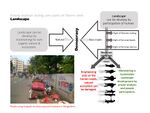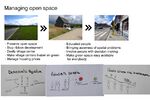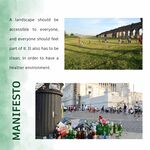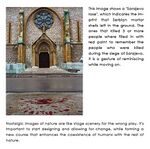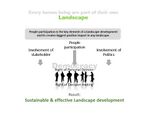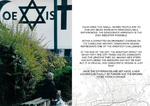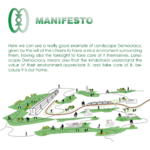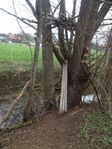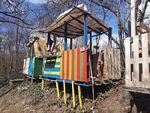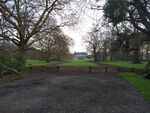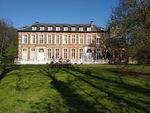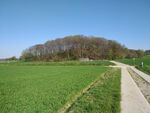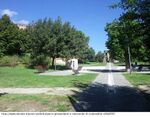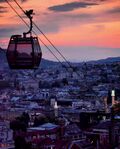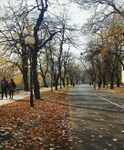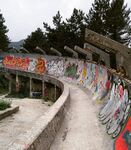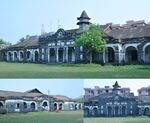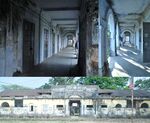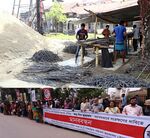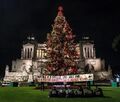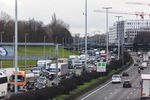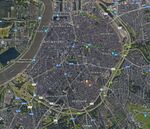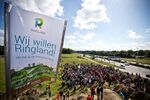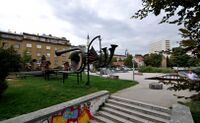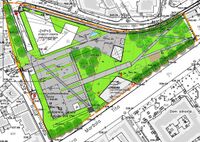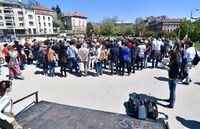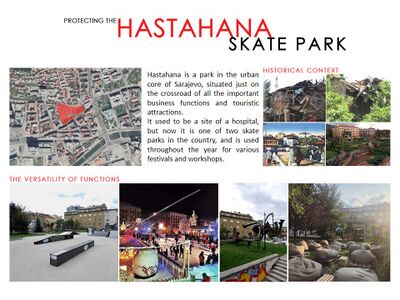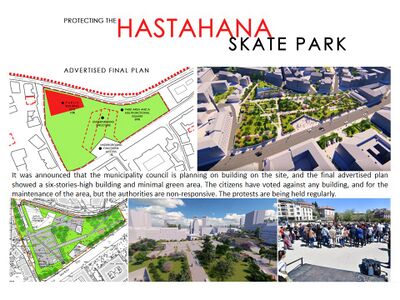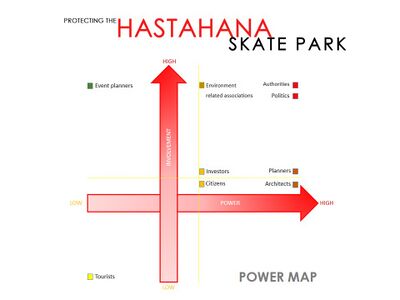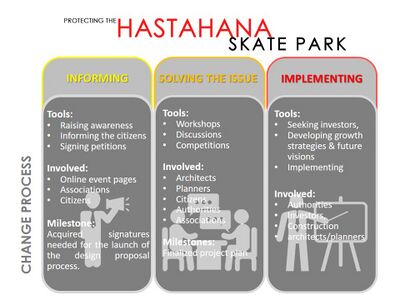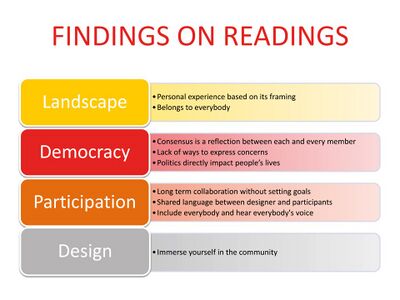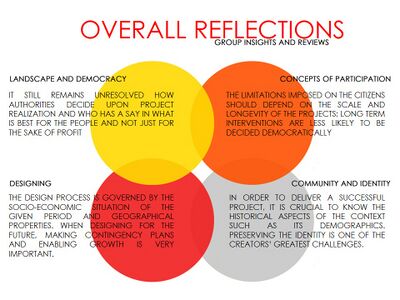LED Online Seminar 2019 - Working Group 6: Difference between revisions
| (77 intermediate revisions by 6 users not shown) | |||
| Line 19: | Line 19: | ||
Image:Assignment 01- Foysal Md Azizul Karim.jpg|Foysal's manifesto | Image:Assignment 01- Foysal Md Azizul Karim.jpg|Foysal's manifesto | ||
Image:Manifesto-open space-Viktor.jpg|Viktor's manifesto | Image:Manifesto-open space-Viktor.jpg|Viktor's manifesto | ||
File:Manifesto chiara.jpg|Chiara's manifesto | |||
Image: | Image:LED Manifesto Glumcevic Anisa.jpg|Anisa's manifesto | ||
</gallery> | </gallery> | ||
| Line 28: | Line 28: | ||
'''A: Landscape and Democracy''' | '''A: Landscape and Democracy''' | ||
'''-Foysal'''-Burckhardt, Lucius (1979): Why is landscape beautiful? | '''-Foysal'''-Burckhardt, Lucius (1979): Why is landscape beautiful? | ||
'''-Chiara''' - IFLA EU Landscape democracy resolution | |||
'''-Viktor''' - European Charter on Participatory Democracy | |||
'''B: Concepts of Participation''' | '''B: Concepts of Participation''' | ||
'''-Foysal'''- Day, Christopher (2002): Consensus Design | '''-Foysal'''- Day, Christopher (2002): Consensus Design | ||
'''-Anisa''' - Hester, Randolph (1999): A Refrain with a View | |||
'''-Chiara''' - Burckhardt, Lucius (1957): Urban Planning and Democracy in: Fezer/Schmitz (Eds.) Rethinking Man-made Environments (2012) | |||
'''-Viktor''' - Hester, Randolph (2005): Whose Politics, Landscape Architecture | |||
'''C: Community and Identity''' | '''C: Community and Identity''' | ||
'''-Foysal'''- Welk Von Mossner, Alexa (2014): Cinematic Landscapes | '''-Foysal'''- Welk Von Mossner, Alexa (2014): Cinematic Landscapes | ||
'''-Anisa''' - Spirn, Anne (2005): Restoring Mill Creek | |||
'''-Chiara''' - Hester, Randolph (2006): Design for Ecological Democracy, The MIT Press | |||
'''-Viktor''' - Gafford, Farrah D. (2013): It Was a Real Village: Community Identity Formation Among Black Middle-Class Residents in Pontchartrain Park, Journal of Urban History 39:36 | |||
'''D: Designing''' | '''D: Designing''' | ||
'''-Anisa''' - Hester, Randolph: Life, Liberty and the Pursuit of Sustainable Happiness | |||
'''-Viktor''' - Hester, Randolph: Democratic Drawing - Techniques for Participatory Design | |||
'''E: Communicating a Vision''' | '''E: Communicating a Vision''' | ||
| Line 48: | Line 58: | ||
'''Concepts and definitions''' | '''Concepts and definitions''' | ||
'''Author 1: | '''Author 1: Foysal''' | ||
* | *'''Why landscape is beautiful?''' | ||
The beauty of a landscape is abstract thinking of the human’s mind and it’s very person to person. So the quality and value of landscape change in every situation. | |||
It can be preset of own thinking or a collection of elements what actually a reflection of human minds. | |||
''' | *'''Consensus Design''' | ||
The main differences between democracy and consensus are, democratic solutions are come from majority’s mind by voting but the consensus is a process where we can find a reflection of each and every member’s mind of a society. | |||
For making a decision human need to think about the future by developing the current condition and by fixing goals. It not about to getting attached only with emotions. | |||
''' | * '''Cinematic Landscape''' | ||
A space where the narrative of a film finds its identity. | |||
It includes: | |||
-Competitive area of filming | |||
-Process of framing the images. | |||
In the example film its shows how people of Louisiana wetlands suffer and survive from a hurricane. It derives that anthropogenic climate changes are not the only cause for a natural disaster. Man-made river control structures also play a big role in it. | |||
'''Author 2: Anisa''' | |||
*"A Refrain With a View" - The paper revolves around encouraging participation and involvement of all the members of community in the design processes, regardless of which group they belong to. Instead of professionalized city management making all the decisions for the community, this approach is set on enriching both the citizens and the area. The concept of the participatory design has been in constant development and underwent great transformations, but it's still relying on another major reformation happening. | |||
*"Restoring of Mill Creek" - Bringing the history of the community closer to people may significantly alter their perception of current state and potential interventions. Landscape literacy is also about having a grip on the available resources and properly allocating them, but it doesn't come without having completely immersed yourself in learning of everything that makes up one's surroundings, and reading into its ongoing dialogues. | |||
*"Life, Liberty and the Pursuit of Sustainable Happiness" - Improving the life quality in terms of sustainability begins with changing the values of the community. The ignorance regarding our surroundings is leading the consumption of non-renewable resources to significant long-term consequences, when in fact, it's raising awareness about pursuing sustainability that may bring new merits and rapture. | |||
'''Author 3: Chiara''' | |||
*'''IFLA EU Landscape Democracy''' - This paper promotes an olistic view of the landscape, and encourages the different Countries to make everyone participate in the design process, because public spaces belong to everyone. | |||
*'''Burckhardt Urban Planning and Democracy''' - The public has little concern of the cityscape, but that doesn't mean that there's no interest. What's lacking is not the concern, but the actual way to express this concern. But we cannot deny that's really difficult to find a meeting point between people with such different backgrounds (architects, urban planners and citizens). Speaking about the cityscape we could say that no one intended it to be as it is, and everybody is always complaining about it. Usually the planning of a city is decided by politicians, but the author's opinion is that urban planners and politicians should cooperate, in order to improve the city and the quality of visible expression of our shared life. | |||
*''' Hester, Randolph (2006): Design for Ecological Democracy, The MIT Press''' - The main sentence the author uses to start his thought is “What is wrong with the cities we have created?”. The answer, given also by experts, is that the way we live is not sustainable, and the main results are for example the greenhouse effect and the high percentage of extinguishing species, and therefore the huge biodiversity loss. poor city planning divides us from others in our community, the author says, and destroys natural habitats, hence no one needs that. The antidote to this situation is the ecological democracy, which is government by the people emphasizing direct, hands-on involvement. Ecological democracy will produce radically new forms of habitation that are looking for roots, and fundamentals, which are the main characteristics of a pleasing life. The implicit part of ecological democracy is, of course, the participatory process design. | |||
'''Author 4: Viktor''' | |||
*EU charter of participation | |||
The direct connection between decision making spatial design direct impact on the quality of life of people is never stressed enough. Politicians need to understand how their action has direct and indirect impacts on people’s lives. As a democratic society we should be able to participate in spatial planning and decision making throughout the whole process. Only then everybody’s voice can be heard, especially the less fortunate people. We need to design with people instead of for people and educate the governments that shared ownership of public space. This will help the public space. | |||
*COAUTHORING DESIGN | |||
We know that when citizens and designers work together on a design, they will created a better end result. For this to work there needs to be a clear communication between the two parties: a shared language for the landscape. As designer you need to understand the different languages people use in community meetings and adopt to these. This way all the different ideas and dreams of the participant will be combined. This can also be done by sketching what orders say. This is no easy skill, because you have to listen very good to what people really want to say. | |||
*Creativity Not Democracy | |||
Trough participation, creative ideas can elevate a design. By being the participation leader and the designer even better ideas are made, but being good at those two aspects is not easy. These ideas come from the synergy between participants and participation leader, and can then be translated to design. The best synergy acquires in a long-term coloration with the community. By not setting an end goal this limits the creativity. Going back and forward in scale in a big project can solve a big problem in an understandable scale. | |||
=== Step 5: Reflection === | |||
After discussing the finding of the readings we concluded that participation of citizens will created a better end result and that politics and government shouldn’t fear this and use this more. Politics have direct impact on the space and the space on all people so people should be more involved in decision making. The landscape belongs to everybody, so you need to take everybody to account in decision making. People who normally wouldn’t be heard should be given chances to participate. The experience of the landscape is for everybody different, and everybody searches for other quality’s and values in the landscape. In the reading we found opposite opinions in goals setting, at the one had good goal setting is important for a good participation project. On the other hand we found the in a long-term collaboration with no goal setting can created a better result because there are no restriction in think processes. | |||
=== Step 6: Revised manifestoes === | === Step 6: Revised manifestoes === | ||
| Line 77: | Line 100: | ||
<gallery caption=" " widths="150px" heights="150px" perrow="5"> | <gallery caption=" " widths="150px" heights="150px" perrow="5"> | ||
File:Revised manifesto- Foysal Md Azizul Karim.jpg|Foysal's updated manifesto | |||
File:REVISED MANIFESTO ANISA.png|Anisa's updated manifesto | |||
File:New Manifesto Loffredi.png|Chiara's updated manifesto | |||
Image:Revised_manifest.jpg|Author's updated manifesto | Image:Revised_manifest.jpg|Author's updated manifesto | ||
</gallery> | </gallery> | ||
| Line 94: | Line 117: | ||
</gallery> | </gallery> | ||
=== Landscape Symbols Author 2: | === Landscape Symbols Author 2: Viktor === | ||
<gallery caption=" " widths="150px" heights="150px" perrow="5"> | <gallery caption=" " widths="150px" heights="150px" perrow="5"> | ||
Image: | Image:Landscape symbol-Viktor-prince the Merode.jpg|The family of the Merode Castle used to control the community and the landscape. But this control has faded overtime. Now you can see the impact on the landscape through many landmarks. Their forests are public hopefully their parcs will be to. 50° 52′ 52.54″ N 4° 33′ 54.98″ E | ||
Image: | Image:Abby castle.jpg|The abbey’s castle is part of a bigger and very old abbey. The abby is no longer in use, en so is this building. Now they made a cafe in this building and renovated the park around it. In the cafe they give work to people with social problems. It became a hotspot during summer to hang out en relax. 50° 53′ 8.99″ N 4° 32′ 56.77″ E | ||
Image: | Image:Village hill.jpg|This hill is named after the village, everybody in the village knows this hill. Young people go there to play. It’s also a beacon in the surrounding landscape especially because the surrounding landscape is bowl-shaped and has no high trees. 50°52'16.8"N 4°34'23.5"E | ||
</gallery> | </gallery> | ||
=== Landscape Symbols | === Landscape Symbols AuthOr 3: Chiara === | ||
<gallery caption=" " widths="150px" heights="150px" perrow="5"> | <gallery caption=" " widths="150px" heights="150px" perrow="5"> | ||
File:Assignment 2 landscape democracy 2.png.jpg|This is one of the very few places in the seafront of Rome where the municipality was able to create a nice place for people to enjoy. | File:Assignment 2 landscape democracy 2.png.jpg|This is one of the very few places in the seafront of Rome where the municipality was able to create a nice place for people to enjoy. | ||
File:Assignment 2 landscape democracy 1.jpg|This is a | File:Assignment 2 landscape democracy 1.jpg|This is a park nearby my home, and because of the misuse that characterizes the place, people are not able to enjoy it. | ||
File:Piazza brin.jpg|This is an ancient building, place in the historic district of Garbatella in Rome. | File:Piazza brin.jpg|This is an ancient building, place in the historic district of Garbatella in Rome. | ||
</gallery> | </gallery> | ||
=== Landscape Symbols Author 4: | === Landscape Symbols Author 4: Anisa === | ||
<gallery caption=" " widths="150px" heights="150px" perrow="5"> | <gallery caption=" " widths="150px" heights="150px" perrow="5"> | ||
File:Pokit 8e8a773dbf952k.jpg|The mountain where the citizens used to spend their weekends soon became “a symbol of aggression”. Trebević was the only place to go for fresh air, but everything changed and the mountain became the foe. Sarajevo hoped to put much of that past to rest and there was indeed a palpable sense of optimism that arose with the reopening. | |||
File:Pokit d0cffa36e832b65fe145a6e9360bda83sd.jpg|This promenade on the Miljacka riverfront, surrounded on the sides with thick rows of trees is closed for the traffic after 5:00 p.m. and on weekends. It allows its users to turn it into whatever they want and need it to be, whether you're walking your dog, roller skating or running marathons. It is a place that gathers everyone in their leisure time and makes up for a catalyst of all activities. | |||
File:Pokit 8e8a773dbf9524b9c37c127d50ec4d26k.jpg|Having underwent a great transformation, from a sport symbol, to a place of historical merit, over a war front line to finally become a place to reunite all the passers by and young folks to relive its greatness and give their own touch to it. | |||
</gallery> | </gallery> | ||
== Assignment 4 - Your Landscape Democracy Challenge == | == Assignment 4 - Your Landscape Democracy Challenge == | ||
| Line 124: | Line 144: | ||
*Each group member will specify a landscape democracy challenge in his/her environment | *Each group member will specify a landscape democracy challenge in his/her environment | ||
=== Landscape Democracy Challenge 1 === | === Landscape Democracy Challenge 1 (Foysal)=== | ||
<gallery caption=" | <gallery caption="Preserve the local history of Architecture, Heritage and Landscape " widths="150px" heights="150px" perrow="5"> | ||
File:Foysal challenge 1.JPG| Abu Sina Hostel, A historical architectural heritage, and landscape build in around the year of 1870 in Sylhet, Bangladesh which was used as a student dormitory for a long time. | |||
File:Foysal challenge 2.jpg| Argue about the history of this building: Some say It was a house of Zamidar (Landlord) Family, others say it was made by the British for institutional or administrative purpose. The most authentic opinion is, the building was used as a printing press for the first local newspaper of Sylhet named ‘’ Sri Hatta Prokash’’ So it’s clear that this building and its surrounding landscape is a part of the history of the local area. | |||
File:Foysal challenge 3.jpg| Recently a public issue raised because the local government made a plan to build a new building in this location by demolishing this historical architectural heritage and its landscape. The government plan is to make 8-storied, 250-bed district hospital in this site. | |||
File:Foysal challenge 4.jpg| A group of local people and architects protest against the steps taken by the government. People want to preserve this historic building and landscape so that it can be used as a museum of local history. | |||
</gallery> | </gallery> | ||
'''Your references:''' | '''Your references:''' | ||
*.. | * https://www.dhakatribune.com/bangladesh/nation/2019/03/13/historic-architecture-being-demolished-for-hospital-in-sylhet | ||
*.. | * https://www.thedailystar.net/city/news/historic-building-faces-demolition-1714915 | ||
=== Landscape Democracy Challenge 2 === | === Landscape Democracy Challenge 2 (Chiara) === | ||
<gallery caption=" | <gallery caption="whose fault is this?"> | ||
File: Rubbish rome.jpg| I've already proposed an image regarding Rome's rubbish in my manifesto, and this is why it chose it as a theme for my landscape democracy challenge. Because I think that the principal factor fo the landscape democracy is that every person should feel comfortable with the environment he's in, and having tons of stinky rubbish doesn't help. | |||
File:Spelacchio monnezza.jpg| The problem is that the government of the city is not able to think of a system of rubbish management that could actually work. This image shows the concern of the inhabitants of the periphery of Rome about rubbish, against the actual government of the city, saying that nobody ever takes the rubbish in those parts of the city. | |||
File:Mayors protesting.jpeg| On the other hand the government is always saying that they do what's possible for them, and that Rome is a difficult city to manage for the rubbish management. Anyway they say they're trying their best to solve the problem, and their main solution is to send all the trash to the little cities around Rome. Int the picture we can see the mayors of these cities protesting for the issue. | |||
File:Ama-79880.660x368.jpg | caption: The actors in this issue are of course the inhabitants and the municipality. Both of them could do something to solve the problem, but they're always taking it to each other. And of course the third actor is the public society AMA that's responsible for the management of the trash in Rome. | |||
</gallery> | </gallery> | ||
'''Your references:''' | '''Your references:''' | ||
*... | *...https://www.dagospia.com/rubrica-3/politica/cinepanettone-raggi-ldquo-roma-sotto-rsquo-immondizia-rdquo-190613.htm | ||
*... | *...https://roma.repubblica.it/cronaca/2018/12/24/foto/roma_immondizia_per_protesta_sotto_l_albero_di_piazza_venezia_periferia_sommersa_dai_rifiuti_-215034941/1/#1 | ||
*...https://www.globalist.it/politics/2019/01/15/la-rivolta-dei-sindaci-della-provinincia-di-roma-stop-ai-rifiuti-della-capitale-nella-provincia-2036130.html | |||
*...https://www.ilfaroonline.it/2017/03/03/ama-secondo-schiaffo-fiumicino-camion-continueranno-passare/162866/ | |||
=== Landscape Democracy Challenge | === Landscape Democracy Challenge - Viktor === | ||
<gallery caption=" | <gallery caption="Ringland" widths="150px" heights="150px" perrow="5"> | ||
Image: | Image:Ringland 4.jpg|I choose ringland, because it's a inspiring project where people of the city want change a big problem. this project involved many stakeholders, in the beginning it where only civilian drive organisaties but now al lot of people, organisation, government, studiebureau,... are involved. | ||
Image: | Image:Ringland 1.jpg| This project is located in Antwerp Belgium. The ring road around Antwerp is always full of traffic and people live very close to this ring road, this road separates the city from its surrounding. Due to all this traffic there is a lot of noisy, air pollution, mobility problems,... Part of the problem of the traffic jams is that there is local traffic and passing traffic all riding together, due to al the highway ramp people need to change a lot of lane. This creates unsafe driving condition. Around this ring a many schools and childcare facility and the city center is densely inhabited. All the air pollution affect their health direct. The road was build in the old defending canal arround the city, due tho the road beeing lower as the sourounding the want a green roof over the highway. This intervestion would creat a enormous park and green area. | ||
Image: | Image:Ring.JPG| The gouverment has already a vision for this road they want to complet the cirkel so traffic jams would go away. But hey don't thake in cosideration the heath, noisy and the green park that could be build ontop of this ringroad. | ||
Image: | Image:Ringland 2.jpg| The actors of this project are the many civilions who want to change. The relay on study bureaus and expert to make plans that are the best option. And then you have multiple governments where they go with there plans to try and convince them to exicute them. | ||
</gallery> | </gallery> | ||
'''Your references:''' | '''Your references:''' | ||
*. | *https://ringland.be/ | ||
=== Landscape Democracy Challenge | === Landscape Democracy Challenge - Anisa === | ||
<gallery caption=" | <gallery caption="Saving the Hastahana skate park" widths="200px" heights="150px" perrow="5"> | ||
File:Anisa challenge 1.JPG|Citizens of Sarajevo are threatened by losing one of the few remaining city parks - Hastahana. It used to be a site of a hospital, but now it is one of two skate parks in the country, and is used throughout the year for various festivals and workshops. | |||
File:Anisa challenge 3.jpg|It was announced that the municipality council is planning on building a Museum of Sarajevo siege, but then they said it was going to be a six-story commercial building and a public garage, with supposedly 89% of the green area. | |||
File:Anisa challenge 2.jpg|The updated version of the project shows the green area has been minimized, and the focus is set on the multi-story building and a public parking in front of it. | |||
File:Anisa challenge 4.jpg|The citizens were surveyed and have voted against any building, but for the maintenance of the area. The architects and urbanists disapproved of the initiative. The protests are been held regularly. The present disturbance is a direct consequence of intentional neglect, which is a common municipal strategy for redesigning green surfaces into the concrete ones, and frantic building of the high-risers on each square centimeter. | |||
</gallery> | </gallery> | ||
'''Your references:''' | '''Your references:''' | ||
*... | *...https://www.skyscrapercity.com/showthread.php?p=153399562 | ||
*... | *...https://zurnal.info/novost/20708/ruse-muzej-i-park-za-djecu-kako-bi-izgradili-jos-jedan-poslovni-centar- | ||
*...https://www.radiosarajevo.ba/vijesti/lokalne-teme/pogledajte-video-prezentaciju-kako-bi-trebala-izgledati-hastahana/338473 | |||
== Your Democratic Change Process == | |||
<gallery caption="Protecting the Hastahana skate park" widths="600px" heights="300px" perrow="1"> | |||
File:Our Challenge slide 1.JPG| Context | |||
File:Our Challenge slide 2.JPG| Challenge | |||
File:Power map.JPG| Power Map | |||
File:Change process.JPG| Change process | |||
File:Findings on readings.JPG| Findings on readings | |||
File:Overall reflection.JPG| Overall reflection | |||
</gallery> | |||
== | == Reflection == | ||
* LANDSCAPE AND DEMOCRACY: It still remains unresolved how authorities decide upon project realization and who has a say in what is best for the people and not just for the sake of profit. | |||
* CONCEPTS OF PARTICIPATION: The limitations imposed on the citizens should depend on the scale and longevity of the projects; long term interventions are less likely to be decided democratically | |||
* DESIGNING: The design process is governed by the socio-economic situation of the given period and geographical properties. When designing for the future, making contingency plans and enabling growth is very important. | |||
* . | |||
* COMMUNITY AND IDENTITY: In order to deliver a successful project, it is crucial to know the historical aspects of the context such as its demographics. Preserving the identity is one of the creators’ greatest challenges. | |||
== Your references == | |||
* ... | * https://www.skyscrapercity.com/showthread.php?p=153399562 | ||
* . | * https://zurnal.info/novost/20708/ruse-muzej-i-park-za-djecu-kako-bi-izgradili-jos-jedan-poslovni-centar- | ||
* .. | * https://www.radiosarajevo.ba/vijesti/lokalne-teme/pogledajte-video-prezentaciju-kako-bi-trebala-izgledati-hastahana/338473 | ||
---- | ---- | ||
[[Category:Landscape Democracy Working Group 2019]] | [[Category:Landscape Democracy Working Group 2019]] | ||
Latest revision as of 21:33, 17 July 2019
--> Back to working group overview
Dear working group members. This is your group page and you will be completing the template gradually as we move through the seminar. Good luck and enjoy your collaboration!
Assignment 1 - Reading and Synthesizing Core Terminology
- You can read more details about this assignment here
- Readings are accessible via the resources page
Step 1: Your Landscape Democracy Manifestoes
Step 2: Define your readings
- Please add your readings selection for the terminology exercise before April 24:
A: Landscape and Democracy -Foysal-Burckhardt, Lucius (1979): Why is landscape beautiful? -Chiara - IFLA EU Landscape democracy resolution -Viktor - European Charter on Participatory Democracy
B: Concepts of Participation
-Foysal- Day, Christopher (2002): Consensus Design
-Anisa - Hester, Randolph (1999): A Refrain with a View
-Chiara - Burckhardt, Lucius (1957): Urban Planning and Democracy in: Fezer/Schmitz (Eds.) Rethinking Man-made Environments (2012)
-Viktor - Hester, Randolph (2005): Whose Politics, Landscape Architecture
C: Community and Identity -Foysal- Welk Von Mossner, Alexa (2014): Cinematic Landscapes -Anisa - Spirn, Anne (2005): Restoring Mill Creek -Chiara - Hester, Randolph (2006): Design for Ecological Democracy, The MIT Press -Viktor - Gafford, Farrah D. (2013): It Was a Real Village: Community Identity Formation Among Black Middle-Class Residents in Pontchartrain Park, Journal of Urban History 39:36
D: Designing -Anisa - Hester, Randolph: Life, Liberty and the Pursuit of Sustainable Happiness -Viktor - Hester, Randolph: Democratic Drawing - Techniques for Participatory Design
E: Communicating a Vision
Steps 3 and 4: Concepts Selection and definition
- Each group member selects three relevant concepts derived from his/her readings and synthesize them/publish them on the wiki by May 15, 2019
- Group members reflect within their groups and define their chosen concepts into a shared definition to be posted on the wiki by June 12, 2019.
- Other group members will be able to comment on the definitions until June 30, 2019
- Each group will also report on their process to come to a set of shared definitions of key landscape democracy concepts on the wiki documentation until July 12, 2019
Concepts and definitions
Author 1: Foysal
- Why landscape is beautiful?
The beauty of a landscape is abstract thinking of the human’s mind and it’s very person to person. So the quality and value of landscape change in every situation. It can be preset of own thinking or a collection of elements what actually a reflection of human minds.
- Consensus Design
The main differences between democracy and consensus are, democratic solutions are come from majority’s mind by voting but the consensus is a process where we can find a reflection of each and every member’s mind of a society. For making a decision human need to think about the future by developing the current condition and by fixing goals. It not about to getting attached only with emotions.
- Cinematic Landscape
A space where the narrative of a film finds its identity. It includes: -Competitive area of filming -Process of framing the images. In the example film its shows how people of Louisiana wetlands suffer and survive from a hurricane. It derives that anthropogenic climate changes are not the only cause for a natural disaster. Man-made river control structures also play a big role in it.
Author 2: Anisa
- "A Refrain With a View" - The paper revolves around encouraging participation and involvement of all the members of community in the design processes, regardless of which group they belong to. Instead of professionalized city management making all the decisions for the community, this approach is set on enriching both the citizens and the area. The concept of the participatory design has been in constant development and underwent great transformations, but it's still relying on another major reformation happening.
- "Restoring of Mill Creek" - Bringing the history of the community closer to people may significantly alter their perception of current state and potential interventions. Landscape literacy is also about having a grip on the available resources and properly allocating them, but it doesn't come without having completely immersed yourself in learning of everything that makes up one's surroundings, and reading into its ongoing dialogues.
- "Life, Liberty and the Pursuit of Sustainable Happiness" - Improving the life quality in terms of sustainability begins with changing the values of the community. The ignorance regarding our surroundings is leading the consumption of non-renewable resources to significant long-term consequences, when in fact, it's raising awareness about pursuing sustainability that may bring new merits and rapture.
Author 3: Chiara
- IFLA EU Landscape Democracy - This paper promotes an olistic view of the landscape, and encourages the different Countries to make everyone participate in the design process, because public spaces belong to everyone.
- Burckhardt Urban Planning and Democracy - The public has little concern of the cityscape, but that doesn't mean that there's no interest. What's lacking is not the concern, but the actual way to express this concern. But we cannot deny that's really difficult to find a meeting point between people with such different backgrounds (architects, urban planners and citizens). Speaking about the cityscape we could say that no one intended it to be as it is, and everybody is always complaining about it. Usually the planning of a city is decided by politicians, but the author's opinion is that urban planners and politicians should cooperate, in order to improve the city and the quality of visible expression of our shared life.
- Hester, Randolph (2006): Design for Ecological Democracy, The MIT Press - The main sentence the author uses to start his thought is “What is wrong with the cities we have created?”. The answer, given also by experts, is that the way we live is not sustainable, and the main results are for example the greenhouse effect and the high percentage of extinguishing species, and therefore the huge biodiversity loss. poor city planning divides us from others in our community, the author says, and destroys natural habitats, hence no one needs that. The antidote to this situation is the ecological democracy, which is government by the people emphasizing direct, hands-on involvement. Ecological democracy will produce radically new forms of habitation that are looking for roots, and fundamentals, which are the main characteristics of a pleasing life. The implicit part of ecological democracy is, of course, the participatory process design.
Author 4: Viktor
- EU charter of participation
The direct connection between decision making spatial design direct impact on the quality of life of people is never stressed enough. Politicians need to understand how their action has direct and indirect impacts on people’s lives. As a democratic society we should be able to participate in spatial planning and decision making throughout the whole process. Only then everybody’s voice can be heard, especially the less fortunate people. We need to design with people instead of for people and educate the governments that shared ownership of public space. This will help the public space.
- COAUTHORING DESIGN
We know that when citizens and designers work together on a design, they will created a better end result. For this to work there needs to be a clear communication between the two parties: a shared language for the landscape. As designer you need to understand the different languages people use in community meetings and adopt to these. This way all the different ideas and dreams of the participant will be combined. This can also be done by sketching what orders say. This is no easy skill, because you have to listen very good to what people really want to say.
- Creativity Not Democracy
Trough participation, creative ideas can elevate a design. By being the participation leader and the designer even better ideas are made, but being good at those two aspects is not easy. These ideas come from the synergy between participants and participation leader, and can then be translated to design. The best synergy acquires in a long-term coloration with the community. By not setting an end goal this limits the creativity. Going back and forward in scale in a big project can solve a big problem in an understandable scale.
Step 5: Reflection
After discussing the finding of the readings we concluded that participation of citizens will created a better end result and that politics and government shouldn’t fear this and use this more. Politics have direct impact on the space and the space on all people so people should be more involved in decision making. The landscape belongs to everybody, so you need to take everybody to account in decision making. People who normally wouldn’t be heard should be given chances to participate. The experience of the landscape is for everybody different, and everybody searches for other quality’s and values in the landscape. In the reading we found opposite opinions in goals setting, at the one had good goal setting is important for a good participation project. On the other hand we found the in a long-term collaboration with no goal setting can created a better result because there are no restriction in think processes.
Step 6: Revised manifestoes
- please look again at your initial manifestoes and update them with any new aspects/prespectives you have taken up during this seminar
Assignment 2 - Your Landscape Symbols
- You can read more details about this assignment here
Landscape Symbols Author 1: Foysal
Landscape Symbols Author 2: Viktor
The abbey’s castle is part of a bigger and very old abbey. The abby is no longer in use, en so is this building. Now they made a cafe in this building and renovated the park around it. In the cafe they give work to people with social problems. It became a hotspot during summer to hang out en relax. 50° 53′ 8.99″ N 4° 32′ 56.77″ E
Landscape Symbols AuthOr 3: Chiara
Landscape Symbols Author 4: Anisa
The mountain where the citizens used to spend their weekends soon became “a symbol of aggression”. Trebević was the only place to go for fresh air, but everything changed and the mountain became the foe. Sarajevo hoped to put much of that past to rest and there was indeed a palpable sense of optimism that arose with the reopening.
This promenade on the Miljacka riverfront, surrounded on the sides with thick rows of trees is closed for the traffic after 5:00 p.m. and on weekends. It allows its users to turn it into whatever they want and need it to be, whether you're walking your dog, roller skating or running marathons. It is a place that gathers everyone in their leisure time and makes up for a catalyst of all activities.
Assignment 4 - Your Landscape Democracy Challenge
- You can read more details about this assignment here
- Each group member will specify a landscape democracy challenge in his/her environment
Landscape Democracy Challenge 1 (Foysal)
- Preserve the local history of Architecture, Heritage and Landscape
Argue about the history of this building: Some say It was a house of Zamidar (Landlord) Family, others say it was made by the British for institutional or administrative purpose. The most authentic opinion is, the building was used as a printing press for the first local newspaper of Sylhet named ‘’ Sri Hatta Prokash’’ So it’s clear that this building and its surrounding landscape is a part of the history of the local area.
Your references:
- https://www.dhakatribune.com/bangladesh/nation/2019/03/13/historic-architecture-being-demolished-for-hospital-in-sylhet
- https://www.thedailystar.net/city/news/historic-building-faces-demolition-1714915
Landscape Democracy Challenge 2 (Chiara)
- whose fault is this?
I've already proposed an image regarding Rome's rubbish in my manifesto, and this is why it chose it as a theme for my landscape democracy challenge. Because I think that the principal factor fo the landscape democracy is that every person should feel comfortable with the environment he's in, and having tons of stinky rubbish doesn't help.
The problem is that the government of the city is not able to think of a system of rubbish management that could actually work. This image shows the concern of the inhabitants of the periphery of Rome about rubbish, against the actual government of the city, saying that nobody ever takes the rubbish in those parts of the city.
On the other hand the government is always saying that they do what's possible for them, and that Rome is a difficult city to manage for the rubbish management. Anyway they say they're trying their best to solve the problem, and their main solution is to send all the trash to the little cities around Rome. Int the picture we can see the mayors of these cities protesting for the issue.
Your references:
- ...https://www.dagospia.com/rubrica-3/politica/cinepanettone-raggi-ldquo-roma-sotto-rsquo-immondizia-rdquo-190613.htm
- ...https://roma.repubblica.it/cronaca/2018/12/24/foto/roma_immondizia_per_protesta_sotto_l_albero_di_piazza_venezia_periferia_sommersa_dai_rifiuti_-215034941/1/#1
- ...https://www.globalist.it/politics/2019/01/15/la-rivolta-dei-sindaci-della-provinincia-di-roma-stop-ai-rifiuti-della-capitale-nella-provincia-2036130.html
- ...https://www.ilfaroonline.it/2017/03/03/ama-secondo-schiaffo-fiumicino-camion-continueranno-passare/162866/
Landscape Democracy Challenge - Viktor
- Ringland
This project is located in Antwerp Belgium. The ring road around Antwerp is always full of traffic and people live very close to this ring road, this road separates the city from its surrounding. Due to all this traffic there is a lot of noisy, air pollution, mobility problems,... Part of the problem of the traffic jams is that there is local traffic and passing traffic all riding together, due to al the highway ramp people need to change a lot of lane. This creates unsafe driving condition. Around this ring a many schools and childcare facility and the city center is densely inhabited. All the air pollution affect their health direct. The road was build in the old defending canal arround the city, due tho the road beeing lower as the sourounding the want a green roof over the highway. This intervestion would creat a enormous park and green area.
Your references:
Landscape Democracy Challenge - Anisa
- Saving the Hastahana skate park
The citizens were surveyed and have voted against any building, but for the maintenance of the area. The architects and urbanists disapproved of the initiative. The protests are been held regularly. The present disturbance is a direct consequence of intentional neglect, which is a common municipal strategy for redesigning green surfaces into the concrete ones, and frantic building of the high-risers on each square centimeter.
Your references:
- ...https://www.skyscrapercity.com/showthread.php?p=153399562
- ...https://zurnal.info/novost/20708/ruse-muzej-i-park-za-djecu-kako-bi-izgradili-jos-jedan-poslovni-centar-
- ...https://www.radiosarajevo.ba/vijesti/lokalne-teme/pogledajte-video-prezentaciju-kako-bi-trebala-izgledati-hastahana/338473
Your Democratic Change Process
- Protecting the Hastahana skate park
Reflection
- LANDSCAPE AND DEMOCRACY: It still remains unresolved how authorities decide upon project realization and who has a say in what is best for the people and not just for the sake of profit.
- CONCEPTS OF PARTICIPATION: The limitations imposed on the citizens should depend on the scale and longevity of the projects; long term interventions are less likely to be decided democratically
- DESIGNING: The design process is governed by the socio-economic situation of the given period and geographical properties. When designing for the future, making contingency plans and enabling growth is very important.
- COMMUNITY AND IDENTITY: In order to deliver a successful project, it is crucial to know the historical aspects of the context such as its demographics. Preserving the identity is one of the creators’ greatest challenges.
Your references
- https://www.skyscrapercity.com/showthread.php?p=153399562
- https://zurnal.info/novost/20708/ruse-muzej-i-park-za-djecu-kako-bi-izgradili-jos-jedan-poslovni-centar-
- https://www.radiosarajevo.ba/vijesti/lokalne-teme/pogledajte-video-prezentaciju-kako-bi-trebala-izgledati-hastahana/338473
